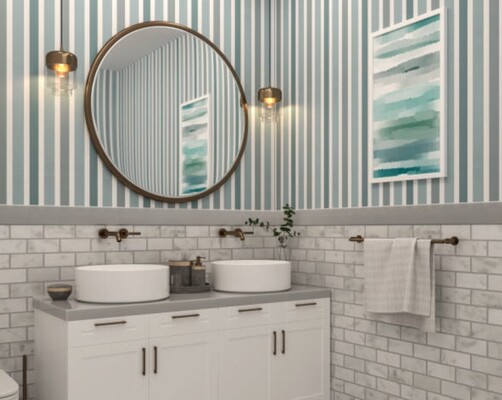- 1-905-452-8193
- Contact Us
- Member Login
- Get Listed Today
- 220,911 members

Bathroom vanities are a popular addition to any bathroom renovation project. They not only provide storage space for your bathroom essentials but also add a stylish touch to the overall décor. Installing a bathroom vanity may seem like a daunting task, but with the right tools and a little bit of patience, it can be done with ease. In this article, we will walk you through the step-by-step process of installing a bathroom vanity.
Before you begin, it is important to note that the installation process may vary depending on the type of vanity you have chosen. Therefore, it is essential to read the manufacturer’s instructions with the installation.
Let’s get started.
Before you begin, it is essential to gather all the tools and materials required for the installation. Here is a list of tools and materials that you will need:
• Adjustable wrench
• Screwdriver• Level
• Tape measure• Drill
• Silicone caulking
• Vanity cabinet and top
• Faucet
• Drain assembly
• P-trap
The first step in installing a bathroom vanity is to remove the old vanity if you have one. Turn off the water supply to the vanity and disconnect the plumbing connections. Once you have removed the old vanity, measure the space where the new vanity will be installed. Make sure to measure the height, width, and depth of the space. This will help you choose the right size vanity for your bathroom.
Next, assemble the new vanity according to the manufacturer’s instructions. This may involve attaching the legs, drawers, and doors. Make sure to follow the instructions carefully to ensure that the vanity is assembled correctly.
Once the vanity is assembled, place it in the desired location and use a level to ensure that it is leveled. If the vanity is not leveled, use shims to adjust the height until it is leveled.
Before you install the vanity, you need to prepare the plumbing. Install the faucet and drain assembly on the vanity top according to the manufacturer’s instructions. Next, install the P-trap and connect it to the drain assembly. Make sure to tighten all the connections with an adjustable wrench.
Once the plumbing is prepared, you can proceed with the installation of the vanity.
The first step in installing the vanity is to attach it to the wall. Locate the wall studs and mark the locations on the back of the vanity. Place the vanity against the wall and use a drill to attach it to the wall using screws. Make sure to use screws that are long enough to reach the studs.
Next, connect the plumbing to the vanity. Slide the P-trap over the drain pipe and connect it to the drain assembly. Tighten the connections with an adjustable wrench.
Finally, attach the vanity top to the vanity cabinet. Apply a thin bead of silicone caulking around the edge of the vanity cabinet and place the vanity top on top of it. Press down gently to ensure that the vanity top is secured in place.
Once the vanity is installed, you can make some finishing touches to complete the installation. Use silicone caulking around the edges of the vanity top to prevent water from leaking. Install the faucet handles and connect the water supply. Turn on the water supply and test the faucet for leaks.
Finally, install the vanity doors and drawers and add any other accessories you may have chosen, such as a mirror or lighting fixture.
Once the installation is complete, it is essential to maintain the vanity to ensure its longevity. Regularly clean the vanity with mild detergent and water to prevent the build-up of dirt and grime. Avoid using abrasive cleaners as they can damage the surface of the vanity.
Check the plumbing connections regularly for leaks and tighten them if necessary. If you notice any signs of leakage, such as water stains or dampness, call a professional plumber immediately to prevent further damage.
Installing a bathroom vanity may seem like a daunting task, but with the right tools and a little bit of patience, it can be done with ease. Remember to read the manufacturer’s instructions carefully before proceeding with the installation and follow the steps outlined in this article.
A well-installed bathroom vanity can add value to your home and provide you with a functional and stylish addition to your bathroom. So, go ahead and give it a try!
Q: Can I install a bathroom vanity myself?
A: Yes, you can install a bathroom vanity yourself with the right tools and a little bit of patience. It is essential to read the manufacturer’s instructions carefully before proceeding with the installation.
Q: How long does it take to install a bathroom vanity?
A: The installation process may vary depending on the type of vanity you have chosen and your level of experience. However, on average, it takes about 2-4 hours to install a bathroom vanity.
